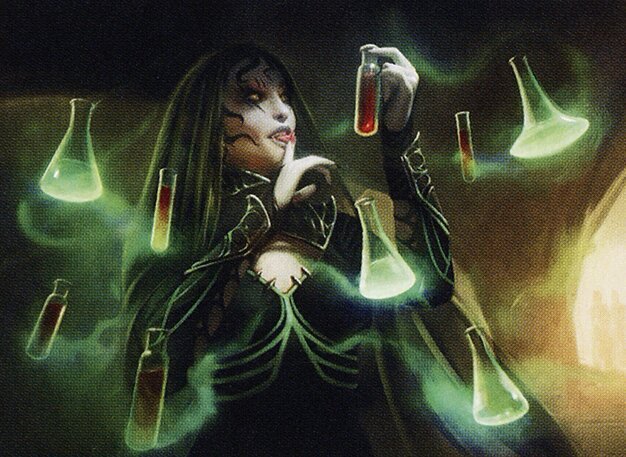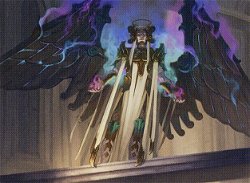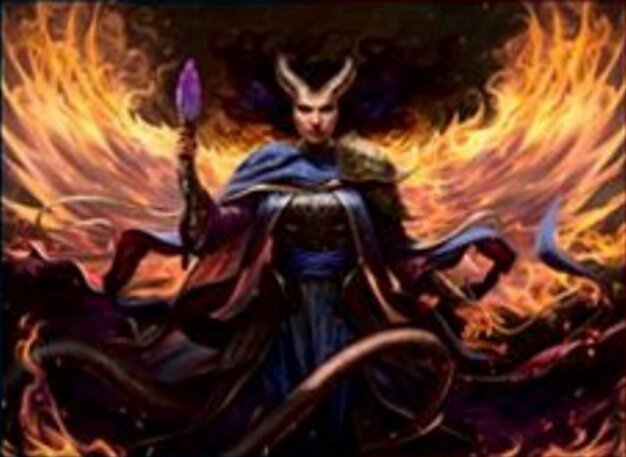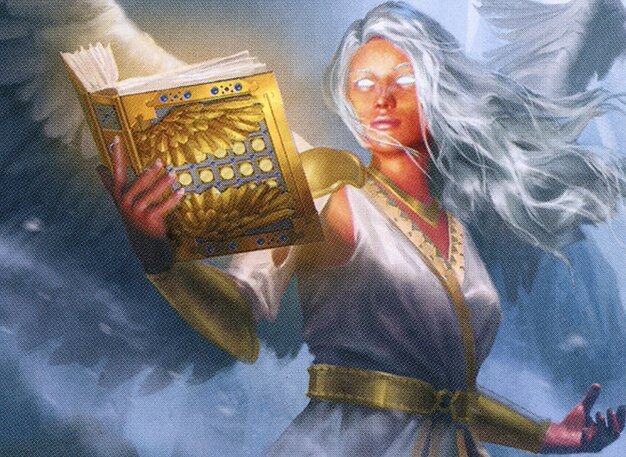The competitive metagame has some elements of its own.
Sometimes, when one strategy prevails over the others in the competitive scenario, players tries to find the most diverse solutions to catch up with this archetype and, in this way, succeed in events and, with a bit of luck, create a deck that consistently beats the best deck of the format.
Sometimes it works, and other times it doesn't.
An example that I remember very well was when Grixis Shadow became the best deck in Modern, in 2017, and among several reactions the community had at this time, some players started designing lists that sought to take advantage of the weaknesses that the famous Tempo deck had back then.
Some lists, such as Mono-White Prison, did not succeed in this plan, but other decks not only succeeded but became part of the main archetypes of the format to date, such as Eldrazi Tron and Death & Taxes.
At Pauper, this event also occurred at times when the format was too focused on a specific strategy, for example: Kuldotha Tokens, a more aggressive version of Kuldotha Boros that used to bet on a more linear game plan with less grind and opting to go “under” Izzet Drake was the predecessor of what we know today as Boros Bully, and the Izzet Faeries as we know it today is the result of a moment in the format's history where Stompy became the best deck thanks to the inclusion of Burning-Tree Emissary, leading Faeries decks to experiment with splashes to deal with their natural predator.
As I explained in this article, the Pauper Metagame finds itself polarizing between two decks, and the same has been done by several players in an attempt to get a good winrate against Affinity and Storm.
It is based on this idea that we have seen decks that tries to take advantage of the lack of interaction of these lists to succeed, as in the case of Burn, which obtained more expressive results in the last week, in addition to other archetypes that obtained results in the last month, such as Black Burn, Infect, Bogles, among others.
Another tactic used on these occasions is to resort to using cards that are naturally great against the predominant acrhetype in the maindeck. Like, for example, using Chalice of the Void in a format dominated by low-cost threats or, in the case of Pauper, using Echoing Truth or Echoing Decay, Duress, among other cards that work as great answers to deal with the predominant decks.
One of these cards that has recently gained space is Suture Priest.

What makes Suture Priest relevant in the current Pauper Metagame is that, when used in an archetype that can establish pressure, the card works like a clock that makes the number of tokens that Storm can put with Chatterstorm an issue for the Storm player, as they will lose 1 life for each creature they put into play.
Also, in a proactive game plan, Suture Priest and cards with similar effects like Soul Warden make Storm's life even more difficult, as every creature you play or that enters the battlefield for the opponent will mean 1 more life that the opponent will need to remove with their tokens when closing the combo, often making it very difficult to perform a combo-kill in a single turn.
However, these lifegain decks, known as Soul Sisters, were never very successful on Pauper because there weren't enough payoffs for this strategy to be viable, as other formats have Ajani's Pridemate or Heliod, the Sun-Crowned, among other cards, while the nature of the format of constantly interacting with creatures made this strategy irrelevant.
But gradually, since the end of last year, Lifegain strategies has received some occasional support in almost every recently released set.

Marauding Blight-Priest gave some relevance and evidence to a deck that the content creator Caleb Gannon had been looking to build for some time, using Epicure of Blood as a payoff for the lifegain.
But it was with Celestial Unicorn that the deck gained prominence with its Mono-White version, even managing to get some results in the Challenges.
Celestial Unicorn gave the deck the ability to attack from an angle it couldn't before, being able to bet on a single large creature against non-interactive decks, while still attacking from the air with Battle Screech and using Silverflame Ritual to make your creatures larger
Obviously, it wouldn't take players long to look for a way to adapt Gannon's Abzan Sisters to a new version using Celestial Unicorn and the as-yet unused Blood Researcher, making the list leave behind the lifedrain of Marauding Blight-Priest to bet on a more agile, efficient and redundant game plan.
And it was with this idea that the player _Against_, better known as the three-time Brazilian Pauper national champion, Alexandre Weber, reached the Top 8 of the Pauper Challenge last Saturday with the list of Abzan Sisters made by one of his followers, Carlos Júnior.
The Abzan Sisters' plan is pretty straightforward: Play your dorks, your Soul Sisters, and use Blood Researcher and Celestial Unicorn to win the game after turning them into giant creatures, while using Winding Way and Lead the Stampede to keep the creatures flowing and invalidate the opponent's 1-for-1 trades.
As the deck generates mana of any color with creatures like Jasper Sentinel, it can have a clean manabase of only forests and still use a splash for other colors on the Sideboard, to get good responses and cards against archetypes where normally the deck's colors lack more efficient things.
Let's find out today how this deck works, and what we can expect from it in the future:
Maindeck

Your Soul Sisters. Cards that work with the rest of the deck to make you gain life repeatedly and efficiently.
Essence Warden works more functionally than the rest of the cards in a deck that operates on a primarily green base, and therefore is top of the list, while Soul Warden acts as a complementary slot.
Suture Priest is not only another card that operates based on the deck's game plan, but as mentioned earlier, it also gives the list a very efficient means of responding to Storm's game plan, as it punishes the opponent for putting multiple creatures on the board in a single turn, dealing 1 damage for each one that enters, meaning that Storm can't wait many turns to try to win the game if you keep chipping its life total every turn.

Your Ajani Pridemates
These cards have become the main reason this deck has resurfaced and is having some success in the current Metagame, as they give the archetype an important cumulative effect that puts a lot of pressure on the opponent's life total, allows the deck to trade favorably against the Affinity's 4/4s, and the inclusion of Celestial Unicorn with the release of Forgotten Realms gave redundancy to this game plan.
It's worth mentioning that these cards' ability triggers for every instance of life gain you get, not for every life you gain.
For example, if you gain two life at once, those cards' ability triggers once, and they gain a +1/+1 counter.
But if you gain 1 life and then 1 more life, the ability will trigger twice, and they'll gain two +1/+1 counters
And it's this point that makes the Soul Sisters' ability so relevant to these cards: they can grow very fast with any creature that enters the battlefield and get out of control quickly.

Your mana dorks.
The most interesting part of the dorks in this deck is that, unlike usual, most of these cards require another creature to add mana, but they make up for it by adding one mana of any color, an effect that no other card in the format has for one mana.
Jaspera Sentinel was one of the best additions the format has received, as it's a dork with a relevant body that can block faeries or other small-bodied creatures with evasion like bird tokens very well.
Saruli Caretaker allows the archetype to hold the game on the ground, as it has a body that blocks a significant number of creatures very well.
Quirion Ranger is essential in this archetype, even though it's not exactly a mana dork, as it allows the deck to reuse the dorks above AND guarantee your land drops with a single card, which can be essential for an archetype that uses only twelve forests as its manabase, while using cards of other colors.
Avacyn's Pilgrim is the only literal mana dork on the list, and it does an impressive job as it adds white mana, an essential color for the deck to work, as it's the color that enables Soul Warden, Suture Priest and Celestial Unicorn.
Rift Sower is an interesting addition, like a dork with "delay", as you can't play it in the first turns at its full cost, but it makes up for it easily as it can be played in turn 2 with Avacyn's Pilgrim, or turn 1 with its Suspend cost.

Your flexible slots.
Benevolent Bodyguard essentially acts as protection for your main creatures, while also offering evasion for your large creatures against certain monocolored decks.
Duskshell Crawler may look like a lost card on the list as a one-of, but it offers your aggressive game plan a consistent way, for a low cost and a good body, to give evasion for your creatures as it gives Trample to any creature with a +1/+1 counter, making it more efficient than other options, such as Elvish Herder.

In a deck with 40 creatures and only 12 lands, cards like Lead the Stampede and Winding Way allow the deck to maintain the flow of creatures, gain a significant amount of card advantage, and a means to recover if the opponent handles your initial wave of threats.
Sideboard

Affinity shall not pass!
If you need another example of how polarized the format is, imagine your deck has a good match against one of the main decks of the format, and you need to dedicate nine slots of your Sideboard against the other best deck of the format to attack it in the most diverse angles?
This is a reflection of the current state of Pauper.
Gorilla Shaman hopefully attacks the artifact lands that enter untapped before the deck manages to explode with its threats
Ancient Grudge and Dust to Dust are great 2-for-1 effects to deal with Myr Enforcer and Sojourner's Companion.
Also, Dust to Dust], along with [[Deglamer are good answers for dealing with the duals that Affinity runs, as they either exile them or put them back into the opponent's deck.
Finally, Masked Vandal is another way to deal with the creatures in the deck that can be revealed with Lead the Stampede or Winding Way.

Tron is still a deck that exists and manages to do some results in Leagues and Challenges, and other decks like Boros Bully are still present in smaller quantities, but have the ever so efficient plan to prevent damage with Prismatic Strands .
Marauding Blight-Priest allows the deck to have reach and win games even when you're locked in combat, while also serving as yet another punishing effect against Storm when used with Essence Warden or Soul Warden, dealing one damage to the opponent for each Squirrel that enters the battlefield.

Sometimes all you need is a little more grind, and Mulldrifter is the best grind element that can be revealed with Lead the Stampede or Winding Way available in the format .
It might look like the card is a little lost in the list (and maybe it is), but Mulldrifter is a great piece to use against Dimir decks, as it blocks creatures like Spellstutter Sprite and Faerie Seer very well, while offering more cards in hand, and can commonly be played before turn five, given the amount of mana dorks the deck uses.
Analysis
A recurring question we've seen since the Mono-White Soul Sisters emerged last week was whether Celestial Unicorn was all that this archetype needed to be competitive within Pauper, and the answer depends on your perception of competitive.
The reality is that Soul Sisters is a great meta-call in the current Pauper Metagame, where decks are more concerned with doing their own absurd thing rather than responding to what the opponent tries to do, making room for a deck like Soul Sisters to succeed because their game plan favors the lack of interaction of their opponents, since Celestial Unicorn and Blood Researcher are two cards that can get out of control quickly and any gaps the opponent gives it could mean defeat.
Also, the inclusion of cards like Suture Priest, Soul Warden and Essence Warden makes the deck naturally good against the biggest threat to the format today: Storm, making it difficult that the archetype can combo-kill you, while the deck also delays the combo-kill of Affinity's Atog + Fling, even though this isn't specifically a good match in Game 1 .
Another interesting point of the deck is its ease of splashing colors, even with a monocolored mana base. That way, you can use cards of other colors easily throughout the game, as seen with using Ancient Grudge and Mulldrifter in this list, thanks to the efficiency and redundancy that the list has to use creatures that add mana of any color.
Also, because of the mana dorks and the interactions between them and Quirion Ranger, this deck can create highly explosive turns with its low-cost cards, creating situations in the game where the opponent will have a lot of trouble to prolong the game if it doesn't interact well with your creatures or opts for a linear game plan.
Looking at the downsides, the reality is that this and any other Soul Sisters variant will have a hard time staying in the Metagame when a banlist comes out.
The first reason for this is that when Storm is no longer a threat and possibly Affinity is weakened, the format will revert to its 1-for-1 trade-in nature and Card Advantage buildup generated by mechanics like Monarch, Bonder's Ornament, Cascade, among others. Which will bring back archetypes like Jund Cascade, Izzet Faeries, Orzhov Pestilence and other decks with a significant amount of board interactions that will have ready-made answers for cards like Celestial Unicorn and Blood Researcher, while the rest of the list is extremely susceptible to sweepers like Fiery Cannonade or Suffocating Fumes.
This is not an exclusive point of this particular list, but I believe this variant is even more susceptible to 1-for-1 trades, as its main attack plan is the creatures that grow with lifegain, while Mono-White can still bet on a beatdown plan with Battle Screech and other smaller creatures.
Another relevant point is how much this list is dependent on its mana dorks to work, which makes it even more susceptible to taking turns where the deck essentially doesn't do anything at all because its Jaspera Sentinel took a Lightning Bolt on turn 1 and all of its initial plays involved adding mana of other colors.
On the other hand, it's possible that a future ban will make the deck to choose to migrate to other angles like using Marauding Blight-Priest to gain other means of reach throughout the game.
That said, the Abzan Sisters looks like a more explosive, interesting and fun version of the Mono-White variant, and a great Meta-Call for a format that is increasingly predominated by decks like Storm, while its sideboard allows it to have enough answers against Affinity.
Conclusion
That was my analysis of the Abzan Sisters, an alternate version of the Soul Sisters that trades its Mono-White base for a list filled with small interactions and offers a significant amount of card advantage and explosive turns when piloted the right way.
Although I classify it as a great Meta Call, it will be very intriguing to see how this archetype will develop in a future where Chatterstorm no longer exists in the format, and in a less polarized Metagame and less focused on one or two archetypes.
Thanks for reading!














— Comentarios 0
, Reacciones 1
Se el primero en comentar